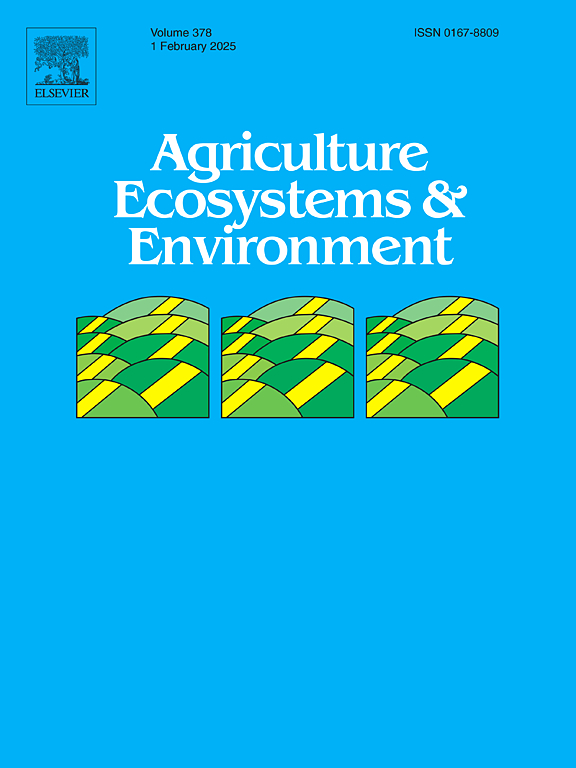Increased nitrogen deposition and airborne particulate matter pollution in the vicinity of intensive animal farms caused by ammonia emissions
IF 6
1区 农林科学
Q1 AGRICULTURE, MULTIDISCIPLINARY
引用次数: 0
Abstract
Intensive animal farms emit large amounts of ammonia (NH3) into the atmosphere. NH3 can cause the formation of NH4+ particles in the atmosphere and their return to the land surface via NH3/NH4+ deposition, imposing the risks of particulate matter and reactive nitrogen (Nr) pollution. Here, we investigated NH3 emissions from an intensive dairy farm, atmospheric NH3/NH4+ deposition, and PM2.5 concentration in the vicinity of the dairy farm in central South China, with the aim of determining the effects of high NH3 emissions from dairy farms on atmospheric N deposition and aerosol pollution. NH3 deposition at a distance of 500 m from the edge of the dairy farm accounted for 10.2 % of annual NH3 emissions from the dairy farm. The measured annual PM2.5 concentration at the dairy farm showed 1.8 times higher than that reported at the neighboring city sites, with aerosol NH4+ contributing to a large part of PM2.5. Total N deposition within 500 m of the dairy farm was as high as 78.4 kg N ha−1 yr−1 (NH3/NH4+ deposition accounting for 64.4 %), which was 2.1 times higher than the N deposition in the neighboring region without dairy farms. Our study indicates that intensive animal farms cause high N deposition and severe airborne particulate matter pollution, and it is important to mitigate NH3 emissions from intensive dairy farms.
氨气排放导致集约化畜牧场附近的氮沉降和空气颗粒物污染增加
集约化的动物养殖场向大气中排放大量的氨(NH3)。NH3可引起大气中NH4+颗粒的形成,并通过NH3/NH4+沉积返回地表,带来颗粒物和活性氮(Nr)污染的风险。本文通过对中国中南地区某集约化奶牛场NH3排放、大气NH3/NH4+沉降和PM2.5浓度的研究,探讨了奶牛场高NH3排放对大气N沉降和气溶胶污染的影响。距离奶牛场边缘500 m处的NH3沉积占奶牛场年NH3排放量的10. %。该奶牛场的年PM2.5浓度测量值是邻近城市的1.8倍,气溶胶NH4+是PM2.5的主要来源。在奶牛场500 m范围内,总N沉降量高达78.4 kg N ha−1 yr−1 (NH3/NH4+沉降占64.4 %),是邻近无奶牛场区域N沉降量的2.1倍。研究表明,集约化养殖场造成了高氮沉降和严重的大气颗粒物污染,因此减少集约化养殖场NH3的排放具有重要意义。
本文章由计算机程序翻译,如有差异,请以英文原文为准。
求助全文
约1分钟内获得全文
求助全文
来源期刊

Agriculture, Ecosystems & Environment
环境科学-环境科学
CiteScore
11.70
自引率
9.10%
发文量
392
审稿时长
26 days
期刊介绍:
Agriculture, Ecosystems and Environment publishes scientific articles dealing with the interface between agroecosystems and the natural environment, specifically how agriculture influences the environment and how changes in that environment impact agroecosystems. Preference is given to papers from experimental and observational research at the field, system or landscape level, from studies that enhance our understanding of processes using data-based biophysical modelling, and papers that bridge scientific disciplines and integrate knowledge. All papers should be placed in an international or wide comparative context.
 求助内容:
求助内容: 应助结果提醒方式:
应助结果提醒方式:


